Politics in Northern Ireland operate completely differently to politics in Great Britain. Northern Ireland has four main political parties: two on each side of the major divide between Catholics/nationalists and Protestants/unionists. Historically the Ulster Unionist Party and the Social Democratic and Labour Party were the larger parties on their respective sides of the sectarian divide, but following the Good Friday agreement of 1998 the two parties have been superseded by more hardline parties over the course of the 2001 and 2005 elections. The Ulster Unionists held ten seats at the 1997 election, but only one at the 2005 election.
A similar process took place in elections for the Northern Ireland Legislative Assembly, which is elected using the same constituencies as Westminster, with each constituency electing five MLAs using proportional representation. The power-sharing government was derailed in 2003 when the DUP and Sinn Fein became the largest parties. A 2007 power-sharing agreement has resulted in devolved government being restored, with all four parties holding ministries, led by the DUP and Sinn Fein.
The fifth significant party in Northern Ireland is the Alliance, a non-sectarian party with a relationship to the Liberal Democrats. The party has won seats in the Legislative Assembly but fares poorly under a first-past-the-post electoral system. A new party has also emerged since the 2005 election called Traditional Unionist Voice. TUV was formed in late 2007 in protest at the formerly-hardline Democratic Unionists going into a power-sharing agreement with Sinn Fein. The party is led by former MEP Jim Allister, who had been elected as a DUP member in 2004. He failed to win re-election in 2009, but managed a solid 13.5% across Northern Ireland.
Out of the 18 seats in Northern Ireland, fifteen seats have solid majorities for either nationalists or unionists. Nine seats have large Protestant majorities, and six have large Catholic majorities. The three remaining seats are not so clear, and depending on the vagaries of first-past-the-post, they could go either way. In the remaining fifteen seats, any close contests would be between different parties on the same side of the sectarian divide.
In 2005, the Democratic Unionists won nine seats, Sinn Fein won five seats, the SDLP won three seats, and the Ulster Unionists won only one seat: North Down.
The UUP, DUP and SDLP all take their seats in Westminster. Sinn Fein, however, refuse to take seats in Westminster, meaning that those seats effectively lie vacant and reduce the number of seats for a majority. The Ulster Unionists traditionally had a formal relationship with the Conservatives, until the 1970s when they withdrew from an alliance with the Conservatives at Westminster. In 2009 the Conservatives and the UUP reached an agreement to run joint candidates, which will presumably mean any UUP members elected in 2010 will help the Conservatives form a majority in the Commons. The UUP’s sole sitting MP, Sylvia Hermon, is considered close to the Labour Party, and resigned from the UUP over their alliance, and will be standing for her seat as an independent in 2010.
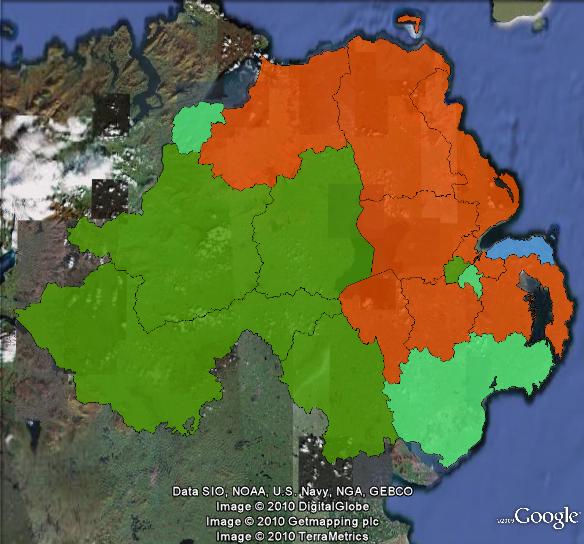
Recent history
- 1987 – 9 UUP, 3 DUP, 3 SDLP, 1 SF, 1 other (James Kilfedder)
- 1992 – 9 UUP, 4 SDLP, 3 DUP, 1 other
- 1997 – 10 UUP, 3 SDLP, 2 DUP, 2 SF, 1 other (Robert McCartney)
- 2001 – 6 UUP, 5 DUP, 4 SF, 3 SDLP
- 2005 – 9 DUP, 5 SF, 3 SDLP, 1 UUP
At the 1987 and 1992 elections, the unionists held 13 out of 17 seats in Northern Ireland, splitting 9 to the Ulster Unionists, 3 to the Democratic Unionists and one to James Kilfedder, elected as an independent unionist in North Down. In 1987, the SDLP won three seats, and Sinn Fein’s Gerry Adams held on to Belfast West, which he had taken from the SDLP in 1983. In 1992 the SDLP won back Adams’ seat. Kilfedder died in 1995 and the ensuing by-election was won by another hardline unionist independent, Robert McCartney.
In 1997, an eighteenth Northern Irish seat was created. The Ulster Unionists won an extra seat, and Sinn Fein won two seats, which included Gerry Adams winning back Belfast West. The SDLP and the DUP each lost one of their seats, and McCartney held his seat.
The 2001 election saw a number of seats change hands. The UUP won back North Down from McCartney, but lost three seats to the DUP and two to Sinn Fein. In 2005, the UUP lost five of their remaining six seats. They lost four to the Democratic Unionist Party, and one to the SDLP, who managed to win the majority-unionist seat of Belfast South due to a split vote between the UUP and DUP. The SDLP’s gain was offset by losing Newry & Armagh to Sinn Fein.
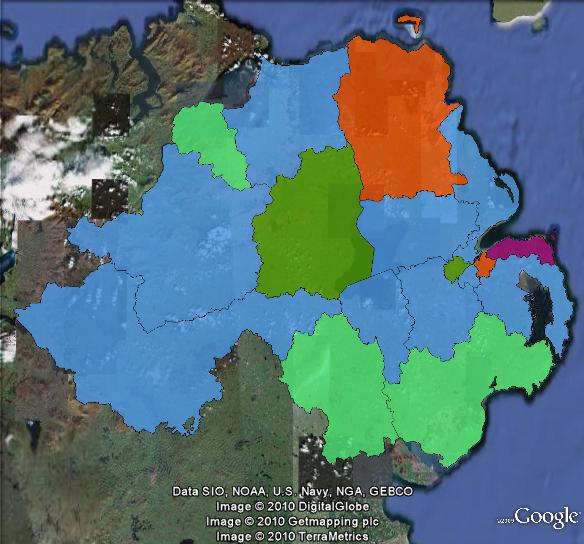
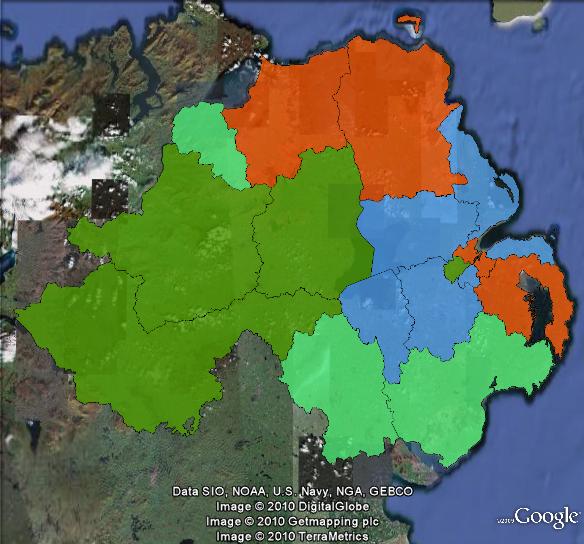
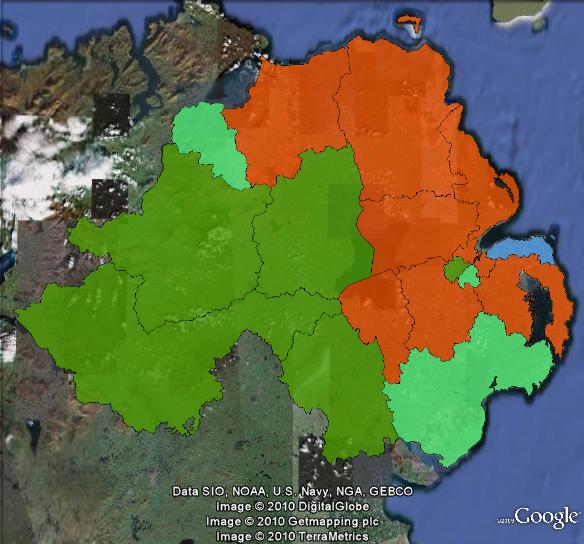
The key seats
- Belfast North – this seat had a 53% vote for unionists and 46% for nationalists, but due to the DUP dominating the unionist vote and the nationalist vote being rather evenly split between Sinn Fein and the SLP, the Democratic Unionists won comfortably in 2005. If Sinn Fein dominates the nationalist vote and the DUP loses ground to the Ulster Unionists and the TUV, this seat could flip.
- Belfast South – long a heartland seat for the Ulster Unionist Party, they lost it in 2005 to the SDLP, beating the DUP by a slim margin with the UUP pushed into third place. This seat has a slim Protestant/Unionist majority, and the SDLP will almost certainly lose if the unionist vote coalesces with a single candidate. On the other hand, the rise of a third significant unionist vote could allow the SDLP to hold on.
- Fermanagh & South Tyrone – this seat has been held by Sinn Fein since they won it over the UUP in 2001. In 2005 53% voted for nationalists and 47% voted for unionists, with Sinn Fein coming out on top. Both unionist parties have withdrawn and endorsed independent unionist Rodney Connor. With Sinn Fein and the SDLP splitting the nationalist vote, the unionists will have a strong chance of winning back this seat. Connor has said he will take the Conservative whip if elected.
- Foyle – covering the city of Derry (or Londonderry to unionists), this seat has a large nationalist majority, with 80% of voters voting for a nationalist party in 2005. The SDLP have held it since 1983, and hold it with a 12% margin over Sinn Fein. If Sinn Fein do well they could claim this seat.
- North Antrim – this seat is very strong for unionists, and has been held by DUP leader Ian Paisley since 1970. Paisley is stepping down in 2010 and the contest for the seat is primarily between his son, Ian Paisley Jr, and TUV leader Jim Allister. Paisley won almost 55% of the vote in 2005, but that was before his party went into government with Sinn Fein.
- North Down – the only seat the UUP managed to win in 2005, their MP Sylvia Hermon is close to Labour and left the UUP in 2009 in protest at their alliance with the British Conservatives. The DUP has stood down their candidate and are supporting Hermon, who is running for re-election as an independent.
- South Antrim – this seat was long held by the UUP until their loss at a 2000 by-election to DUP candidate William McCrea in the midst of the Good Friday agreement’s implementation. McCrea lost the seat back to the UUP at the 2001 election but regained it in 2005, with a 9% margin.
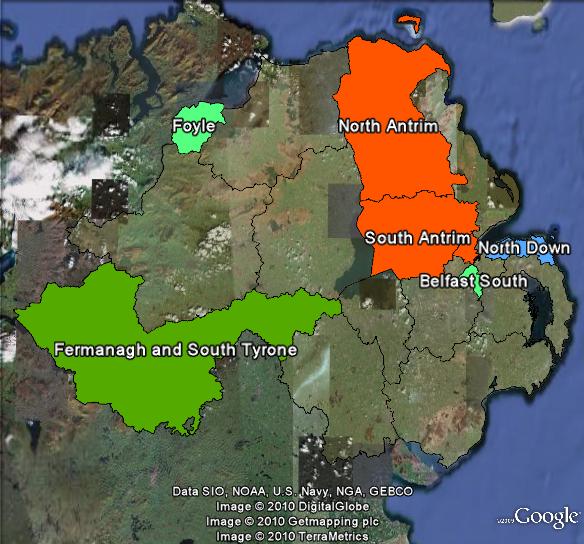
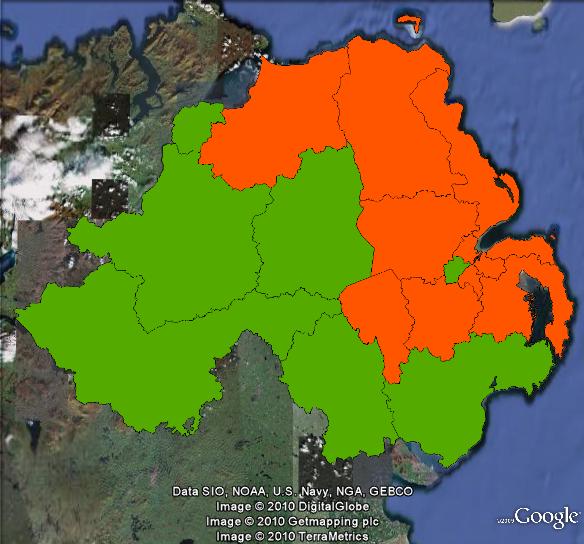
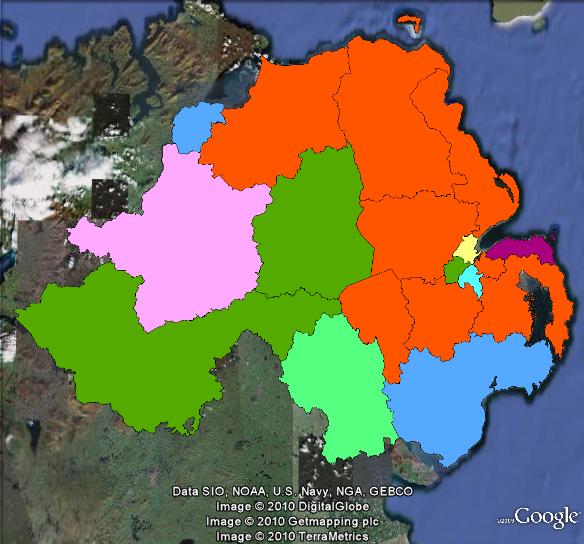
Elsewhere: profiles of the election in Northern Ireland at The Guardian and UK Polling Report.


Um, I’ve basically ignored NI, so I will just agree with whatever Ben predicts here.
I won’t be making election predictions for the UK.
Ok, well I confidently predict 18 seats will be won by Northern Ireland parties/candidates.